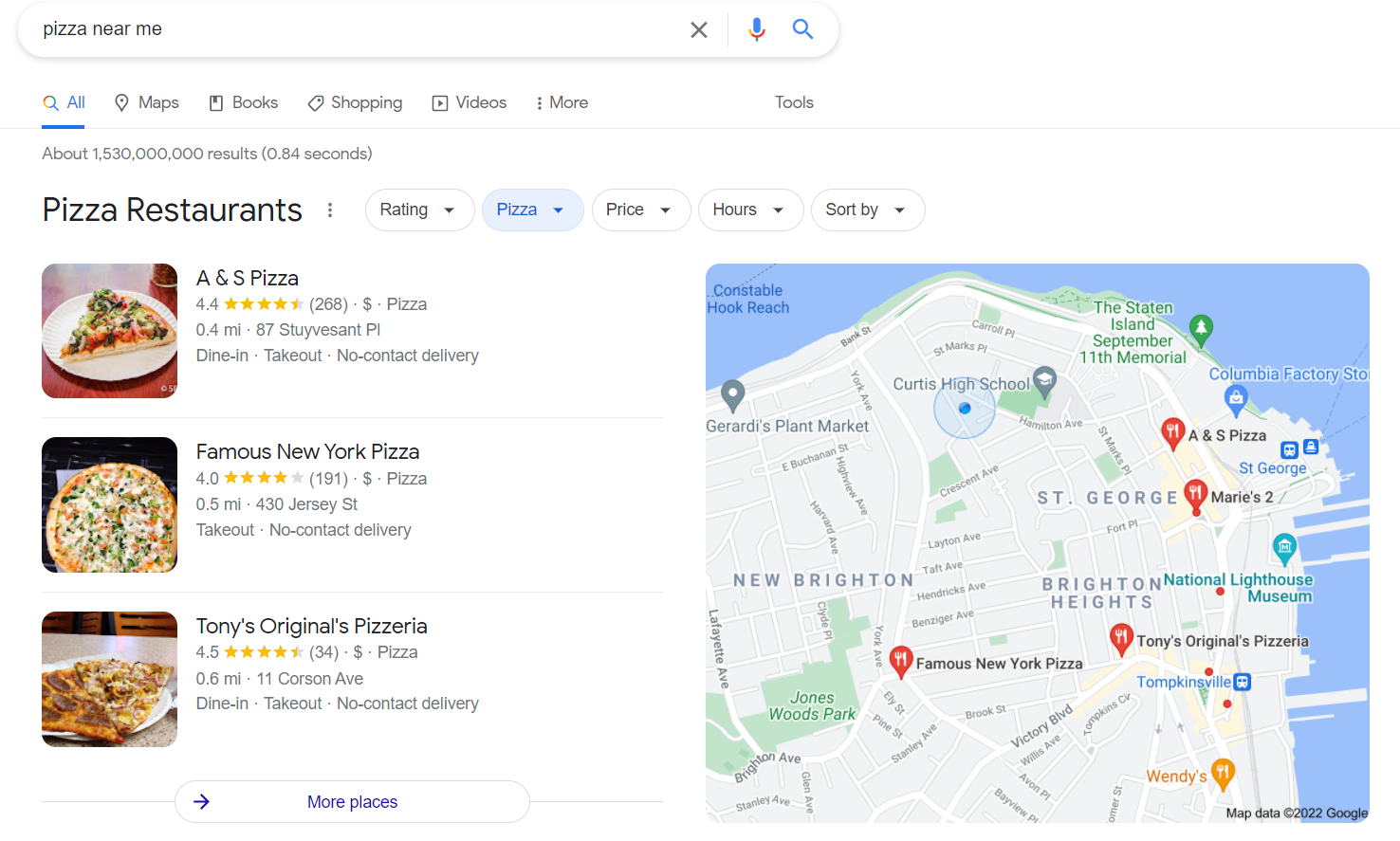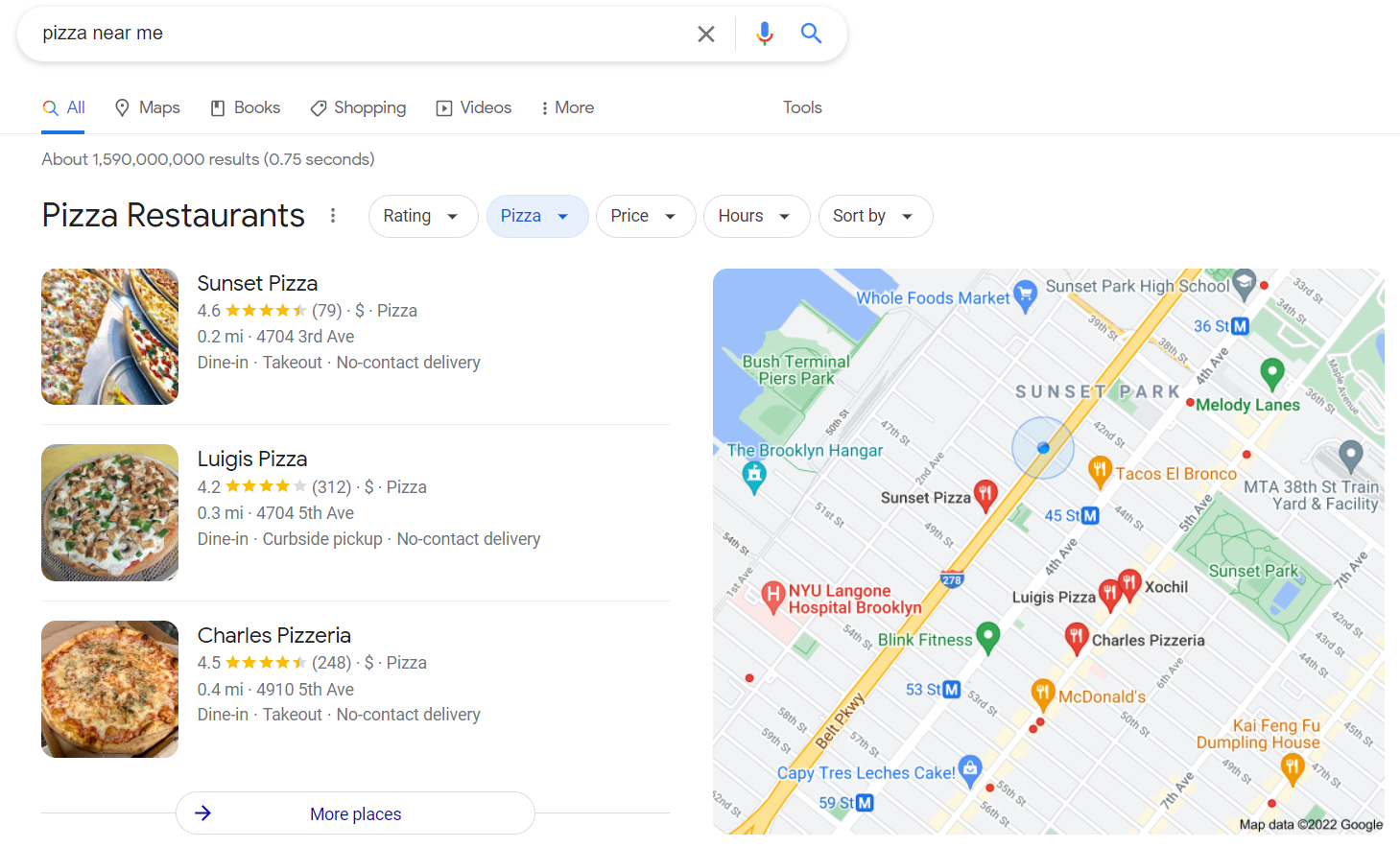The theme for the month is personalization and we want to tackle this topic in all realms of the marketing world, using this piece to touch specifically on search.
Keywords are important and rankings are important. Our expert SEO teams have this down pat. But is there a way to look at it from a non-technical perspective? You know, the consumer perspective? That’s where we get personal.
What Affects Search Results?
Every user’s search process will be different from the next (unless you’re browsing signed out, incognito, or in between cleared browser histories). To perform better in personalized search, you need to understand the factors to optimize for.
1. Time
Search engines are constantly updating search results based on real-time events. Things change quickly in the real world and that is reflected by search.
Thinking back to pre-pandemic times, searching “vaccine” might bring up flu vaccines during flu season and other vaccine development news during the off-season. Now the entire search page is flooded with COVID news from vaccine trackers to booster information, and even news on celebrities who have tested positive for the virus.

2. Location
This is less relevant if your content is universal for any user. But if you’re targeting specific markets or have specific business locations, you can cater to them to rank higher in someone’s personalized search.
Users receive location-based information depending on where they are. Someone living in NYC will not get the same search results for “pizza near me” as someone in Los Angeles and the same can even apply to different areas of the same city, like Brooklyn versus Queens, or even Hell’s Kitchen versus the Lower East Side.
Steps to take towards improving? Make sure to claim your Google My Business (GMB) listing and ensure all the details such as address, phone number, and other information are correct. Double check that these are consistent across your website and social media. Include locally based keywords to optimize results. Think “homemade Brooklyn pizza” as opposed to “best pizza in town.”


3. Browsing History
Search engines are great at using a user’s past web activities to customize future searches. The problem with this is that customers who have clicked on competitor pages in the past will continue to have them ranked higher in their searches.
This can be a bummer for sites that are still working on improving their ranking. On the plus side, this gives you something to strive for. Continue working towards those spots among the top results in an unbiased browser. Earning these top spots turns the tides and gets history-based personalization working for you.
4. Algorithm Tests
Sometimes the situation is completely out of your control. Even evergreen topics can be affected when search engines decide to update their algorithms. This can range from small groups of users testing new search behavior to core updates that change the search environment for everyone.
When this occurs, take a breath and pivot. Your team was capable of getting you into the top results once, which means some preparation and relearning will get you there again.
Connecting Worlds
There are ways to personalize search indirectly by personalizing everything else. Social media and offline advertising still have their roles in cuing users into your brand. And sure, everything can operate on its own, but wouldn’t it be better if connecting these worlds could improve the search side?
SEO professionals face the challenge of social media dominating organic and personalized listings. The fix to this is to create high-quality content and gain exposure on the social media end. Treat this as a ranking opportunity and, if you are looking to get personal on your social channels, check out our blog on “How to Get Personal in Social Media.”
Others have taken it a step further and formed connections between the offline channels and online channels. For example, TV watchers search based on what they see. We all look up sports rosters, dates the next episode of our favorite TV show airs, or even random ads that pique our interest. We also share this with our social groups whether we’re posting a game day win status or discussing movie plots in messages.
There are also tools like digital fingerprinting that let brands know if your ad is running which gives you the opportunity to adjust and increase your paid search in relation to these air times. If you know there are external factors affecting your customers, why not use them to your advantage?
Segmentation and Its Role in Personalization
Understanding your audience is the first step in creating useful segmentation. When you shift your mindset to targeting audiences rather than branding keywords, you allow personalization to enter your search efforts.
Start somewhere simple like asking yourself who knows your brand and who doesn’t, and then branch out from there. You can include, exclude, combine, and recombine any audience actions to come up with a specific niche to target. Target by demographic, context, interest, topics, etc.
It’s not just the needs of your company you should focus on either. Adjust your advertising and messaging according to the expectations of your audience. The most loyal customers will have different relationships with your brand than those who are just figuring you out. Recognize that and customize messaging alongside it.
Think Like Your Audience
While you can have SEO pros working on immaculate keyword lists, never forget about a big component of search. Your audience.
Focus on the words that your clients and customers are using and not just the ones your company uses. For example, your product may have the most pleasing, fancy-sounding name like the “Renaissance Gold Five-Piece Place Setting” but, in reality, your customers are searching for “gold plates” or “China place settings.”
Another example of this is hotels that advertise ADA accessible rooms. These are great keywords to include, but to fill the gap, make sure to also include keywords like “roll-in showers” or “bathroom handrails” because that is what the audience will search for.
For good practice, take the additional words you’ve come up with and plug them into a keyword discovery tool to find similar words that are inclusive of your target audience.
The Takeaway
When it comes to personalization and search, it’s not only about figuring out how to implement what, where or how to stuff something complex into something else that is equally complex or, wait a second, how do I tailor this page towards this audience but also towards another and…
Pause. Take a breath and remember that making an experience personal really comes down to understanding your customer at the moment of search and adapting your tactics to make them care about who you are.
Make it relevant and then make it connect. While we are in an era that simultaneously gives us more and less access to people, narrow in on building a connection with your consumers and let that guide your search efforts.
Need help implementing personalization into your search strategy? Contact us at expert@emfluence.com.



